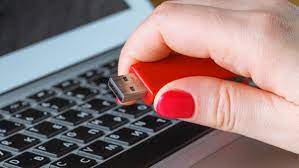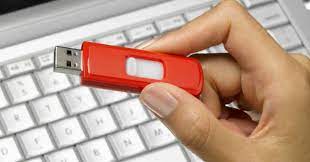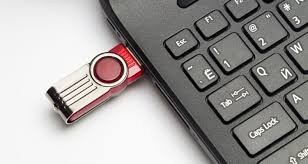How to password protect a USB.Many times a USB stick can contain very important files, for this reason, it may not be a bad idea to protect it with a password. In this way, only those who know the secret word will be able to access the content . In this guide we will therefore go to see how to do it on Windows, macOS and even on Linux.

How to password protect a USB
- Password protect a USB with Windows PC
- Password protect a USB with Mac
- Password protect a USB with Linux PC (universal method)
Password protect a USB with Windows PC/How to password protect a USB

Let’s start right away with all PCs equipped with the most popular operating system on the market. Windows, starting from Vista, has a very advanced encryption function as standard, dedicated to storage devices, including USB sticks. Its name is BitLocker and to activate it, you will need to follow some fairly simple and immediate steps.
- Connect the USB key to one of the computer ports
- Open “This PC” on the Windows computer to which the key is connected
- Right-click on the name of the key to be protected
- In the drop-down menu that appears, choose the item “Activate Bitlocker”
- Confirm the operation by entering the computer login password
- Wait a few moments and select “Use password to unlock drive”
- Add a barring password (difficult to identify and at least 8 characters) and continue with “Next”
- Choose whether or not to generate a “recovery file” or to save “a recovery key” (in case you forget the password entered)
- Continue with the “Next” button
- When the “Specify the size of the portion of the drive you want to encrypt” screen appears , choose the first option to apply the protection only to the space currently used on the key, or the second to immediately protect the entire memory
- Proceed again with “Next” and conclude with “Start encryption”
Password protect a USB with Mac/How to password protect a USB
Also on Mac there is a function very similar to the one seen previously. It is called “FileVault” and, once applied, the key can only be used with other computers with macOS and will therefore be inaccessible to Windows, Linux or other PCs .
- Connect the USB key to one of the ports on the Mac
- Open the Finder (first icon to the left of the dock) on the Mac to which the key is connected
- Right-click on the name of the key to be protected (located in the left column)
- In the drop-down menu that appears, choose the item “Encoding” (in the photo below illustrated as “Decoding”)
- Add a lock password (difficult to identify) and confirm the operation by inserting the key again after having removed it for a few moments
Password protect a USB with Linux PC (universal method)/How to password protect a USB
Finally, let’s see how to use a universal method and therefore available, as well as on Windows and macOS, on PCs with Linux. Everything will work thanks to a very simple free program. Its name is SecurStick and it can be downloaded directly from the official website .
- Connect the USB key to one of the computer ports
- Download and install the SecurStick program (available for download at the link above)
- IMPORTANT: extract the executable you just downloaded into the key
- In the new screen that appears, choose the password to use to protect the USB stick
- Confirm with “Create”
